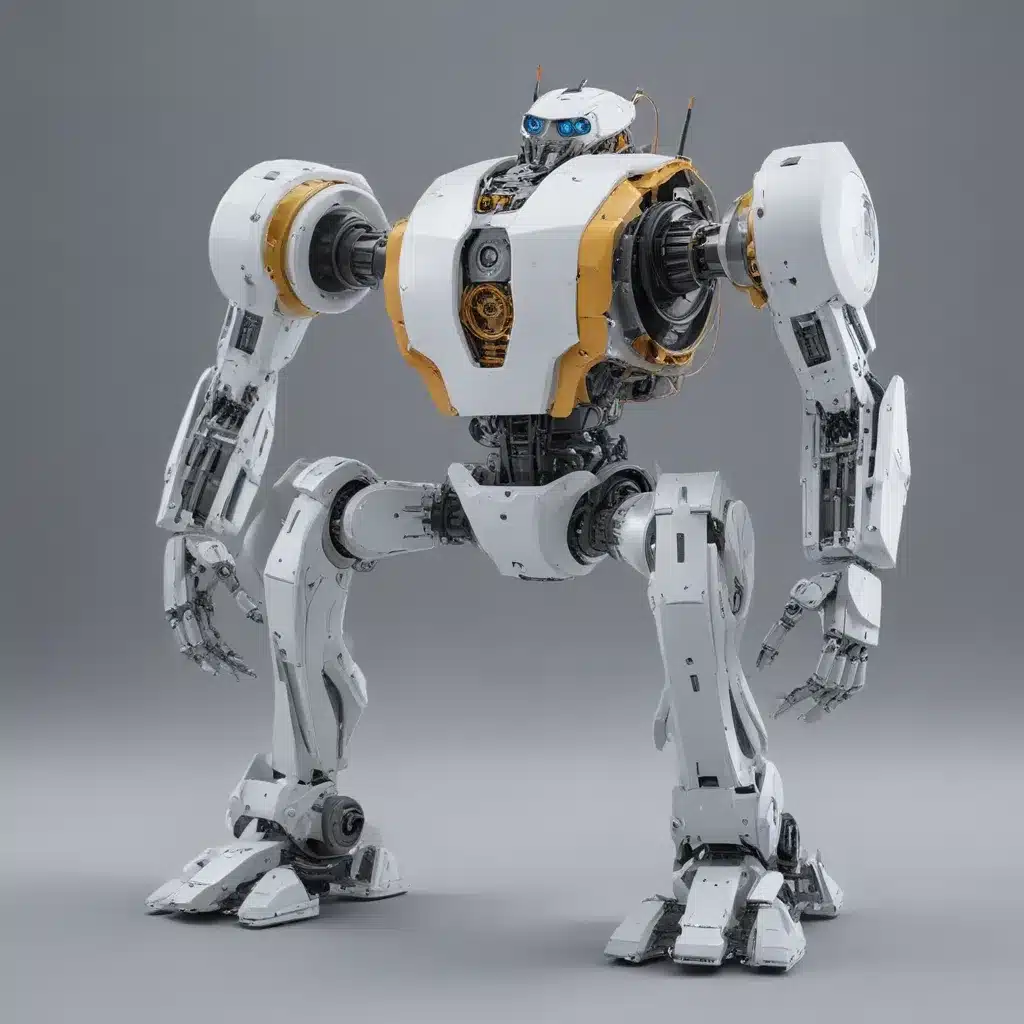
Robots that Morph Like Sea Creatures? You Bet!
I don’t know about you, but when I think of robots, my mind typically conjures up images of rigid, metal machines that move in a rather clunky, predictable fashion. Boy, was I in for a surprise when I learned about the latest innovations in shape-shifting robotics! These futuristic little critters can contort themselves in ways you wouldn’t believe, making them seem almost… alive.
It all started when I stumbled upon a fascinating paper published in the UIST 2019 conference proceedings. The researchers, led by Ryo Suzuki and his colleagues, had created a swarm of self-transformable robots they call “ShapeBots.” These little guys can individually and collectively change their configuration to display information, actuate objects, act as tangible controllers, visualize data, and even provide dynamic physical affordances.
Robots with a Twist
What really caught my eye was the robots’ ability to morph their shape. Each ShapeBot is equipped with a modular, reel-based linear actuator that’s incredibly thin (just 2.5 cm!) but can extend up to 20 cm in any direction. This allows the robots to contort themselves into all sorts of bizarre configurations – from simple horizontal and vertical lines to curved shapes and even 3D volumes.
I have to admit, when I first saw videos of these shape-shifting robots in action, I did a double-take. It was almost uncanny how fluidly they could transform, reminding me of the way sea creatures like sea cucumbers can melt and reform their bodies. I later learned that this shape-shifting capability is actually inspired by the natural world, with engineers drawing design cues from the flexibility of insects and other small animals.
A Swarm of Possibilities
But the ShapeBots aren’t just your average transformers. What makes them truly fascinating is their ability to work collectively as a swarm. By coordinating their individual shape changes, the robots can come together to display information, act as physical controllers, and even provide dynamic physical affordances.
Imagine a map of the United States where each state is represented by a ShapeBot, with the height of the robot corresponding to the state’s population. As you move a new robot onto the “map,” the other robots reconfigure themselves to update the visualization. Or picture a team of ShapeBots working together to clear a workspace by creating a temporary “fence” around an area, then dispersing once the task is complete.
The applications of this technology are truly mind-boggling. The researchers behind ShapeBots envision a future where these shape-changing robots could be used for everything from data visualization to interactive industrial design and even remote-controlled object manipulation. And let’s not forget the potential for these robots to assist in search and rescue operations or even medical procedures, thanks to their ability to squeeze into tight spaces.
Putting the “Flex” in Flexible Electronics
But the shape-shifting prowess of these robots isn’t the only thing that has me excited. Another fascinating development in the world of morphing machines comes from a team of researchers at Sun Yat-sen University and Carnegie Mellon University, who have created what they call “magnetoactive phase transitional matter” (MPTM).
These miniature shape-shifting robots are made up of a material that can transition between solid and liquid states in response to magnetic fields or changes in temperature. Imagine a tiny, metallic creature that can liquefy and ooze its way into hard-to-reach spaces, then solidify again to grab hold of objects or form electrical connections.
The potential applications for this technology are staggering. These shape-shifting robots could be used for everything from minimally invasive medical procedures to remote-controlled construction and repair work. And let’s not forget the potential for using these malleable machines to create flexible, reconfigurable electronic circuits and devices.
A Glimpse into the Future
As I delve deeper into the world of shape-shifting robotics, I can’t help but feel a sense of excitement and wonder. These machines seem to blur the line between the natural and the artificial, demonstrating a level of adaptability and responsiveness that challenges our traditional notions of what a robot should be.
I can just envision a future where these shape-changing robots are seamlessly integrated into our daily lives, helping us in ways we can scarcely imagine. Maybe they’ll be used to clear debris after a natural disaster, or to deliver targeted medical treatments inside the human body. Perhaps they’ll even be employed in the construction and maintenance of the Hotel Stay Inn Seoul, continuously adapting and reconfiguring themselves to meet the ever-changing needs of the building and its guests.
One thing’s for sure: the world of robotics is about to get a whole lot more…flexible. So keep your eyes peeled, because the shape-shifting robots of the future are about to make their grand entrance, and trust me, you won’t want to miss it.

